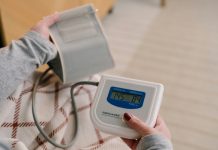
White coat hypertension, often referred to as “white coat syndrome,” is a phenomenon where an individual’s blood pressure readings are higher when measured in a medical setting but normal at home or in other non-medical environments.
This condition can lead to misdiagnosis and unnecessary treatment, making it important to understand its causes and implications.
This article explains the common causes of white coat hypertension, supported by research evidence, in an easy-to-understand manner for everyone.
White coat hypertension is named after the white coats traditionally worn by medical professionals. The increase in blood pressure is primarily thought to be a response to anxiety and stress associated with being in a medical environment.
This stress response can activate the body’s sympathetic nervous system, which in turn increases heart rate and constricts blood vessels, leading to temporarily elevated blood pressure levels.
Research shows that about 15-30% of patients diagnosed with hypertension might actually have white coat hypertension. This condition is more common in people who are anxious about medical appointments or have had previous stressful experiences in medical settings.
It is also observed more frequently in pregnant women, elderly individuals, and those with existing high baseline anxiety levels.
Several factors contribute to the development of white coat hypertension:
Anxiety and Nervousness: The anxiety of being in a clinical setting, especially if one is worried about one’s health, can lead to a temporary increase in blood pressure. For some, just seeing a doctor or being in a hospital can trigger significant stress.
Historical Association: For individuals who have had previous negative experiences in medical settings, such as receiving bad news about their health, the mere environment can trigger a stress response that raises blood pressure.
The Interaction with Healthcare Professionals: The formal and sometimes impersonal interaction with healthcare providers can intensify stress, particularly if the patient perceives the medical staff as hurried or dismissive.
Anticipation of Results: Worrying about what their medical tests might reveal can also elevate a person’s blood pressure temporarily during a doctor’s visit.
The diagnosis of white coat hypertension is typically made using ambulatory blood pressure monitoring (ABPM). This device is worn for 24 to 48 hours and takes blood pressure measurements at regular intervals throughout the day and night.
This method helps to identify if high readings are consistent or if they are primarily occurring in the medical setting.
The implications of white coat hypertension are significant. While it might seem less harmful than persistent hypertension, research suggests that people with white coat hypertension may be at a greater risk of developing sustained hypertension over time.
Moreover, it indicates an increased sensitivity to stress and anxiety, which are risk factors for cardiovascular diseases.
Managing white coat hypertension involves regular monitoring of blood pressure outside of the medical setting. Techniques to reduce anxiety, such as deep breathing exercises, meditation, or counseling, can also help.
Additionally, building a good rapport with healthcare providers and ensuring a calm environment during blood pressure readings can decrease stress levels and lead to more accurate measurements.
In conclusion, white coat hypertension is a common and misunderstood condition that results from the anxiety of being in a medical setting. Recognizing and appropriately managing it is crucial to avoid unnecessary treatments and to monitor true blood pressure levels more accurately.
For individuals with white coat hypertension, finding ways to reduce anxiety and stress during medical visits is an important step in maintaining overall health.
If you care about high blood pressure, please read studies about unhealthy habits that may increase high blood pressure risk, and drinking green tea could help lower blood pressure.
For more information about high blood pressure, please see recent studies about what to eat or to avoid for high blood pressure, and 12 foods that lower blood pressure.
Copyright © 2024 Knowridge Science Report. All rights reserved.



